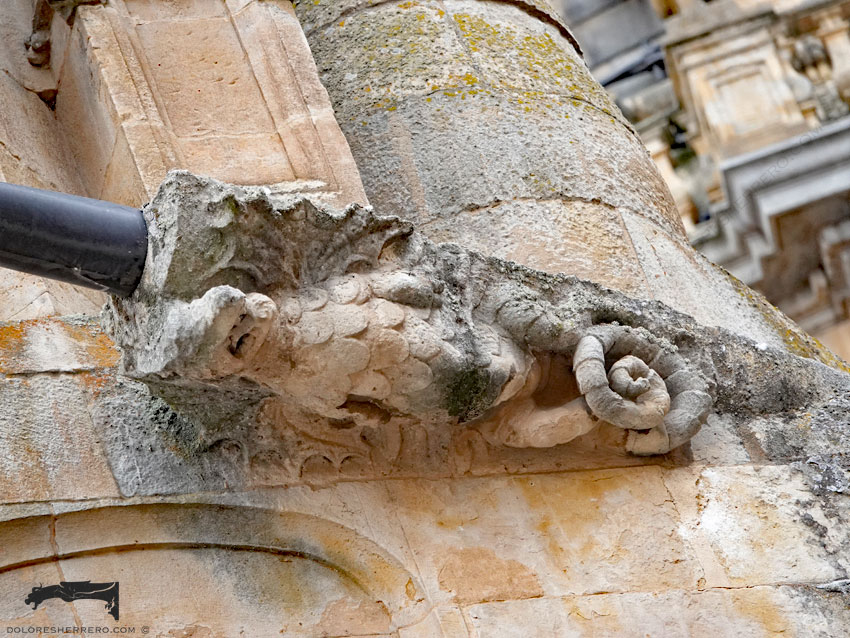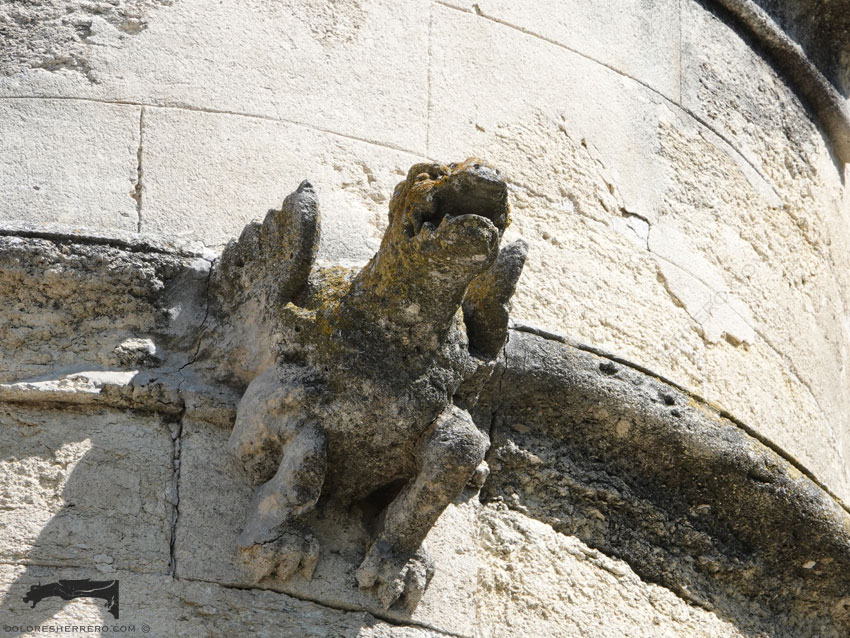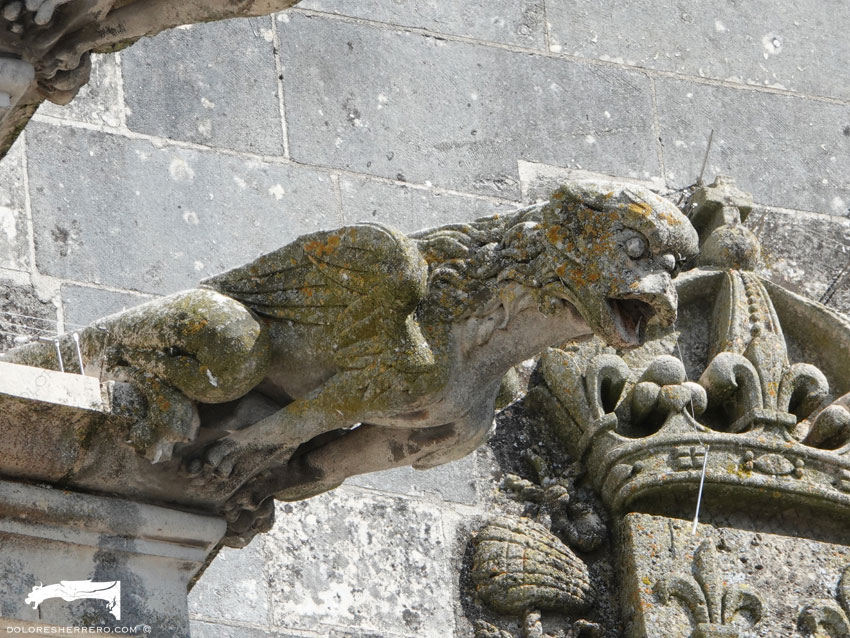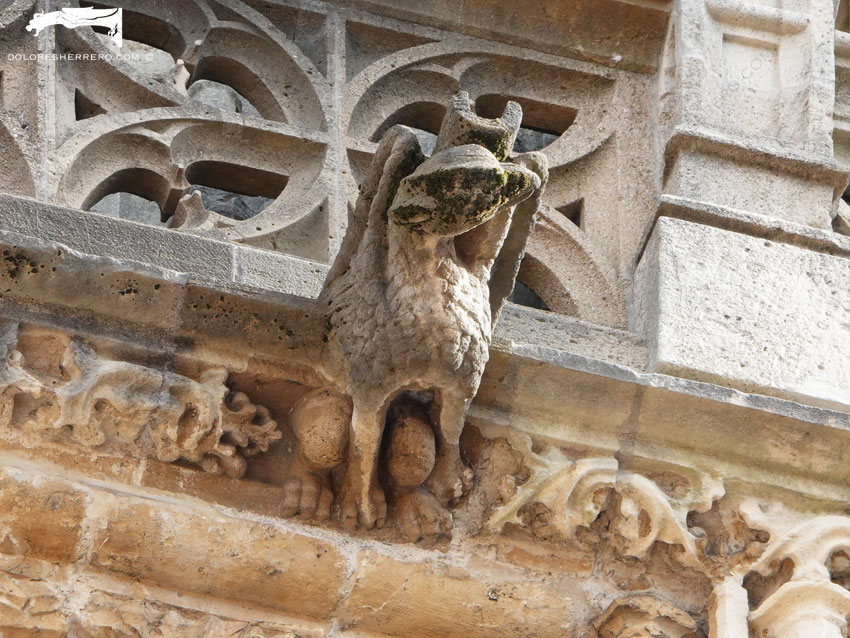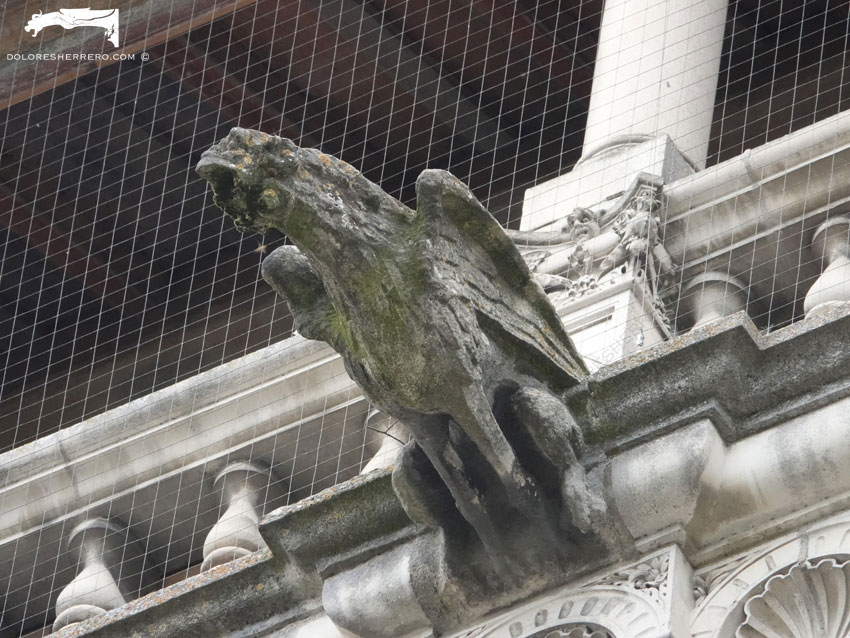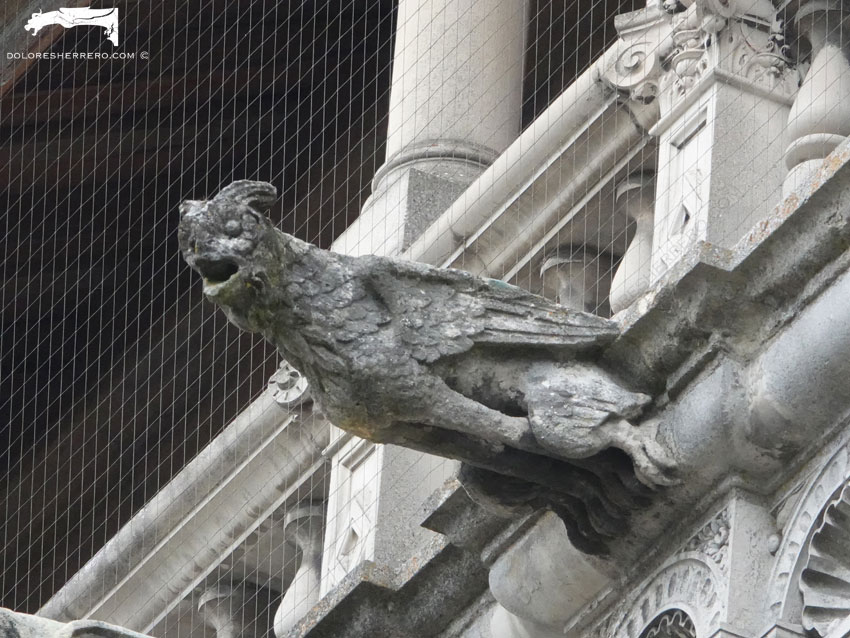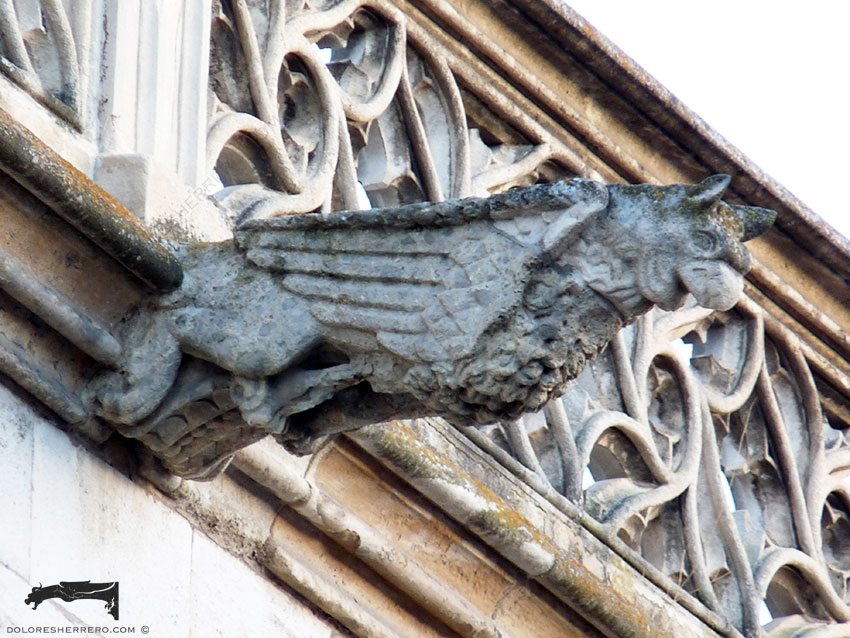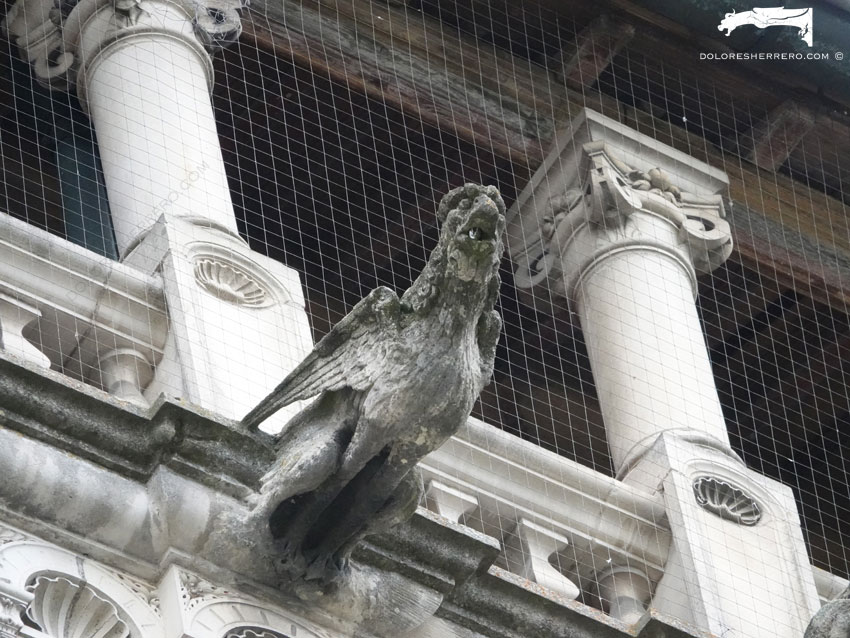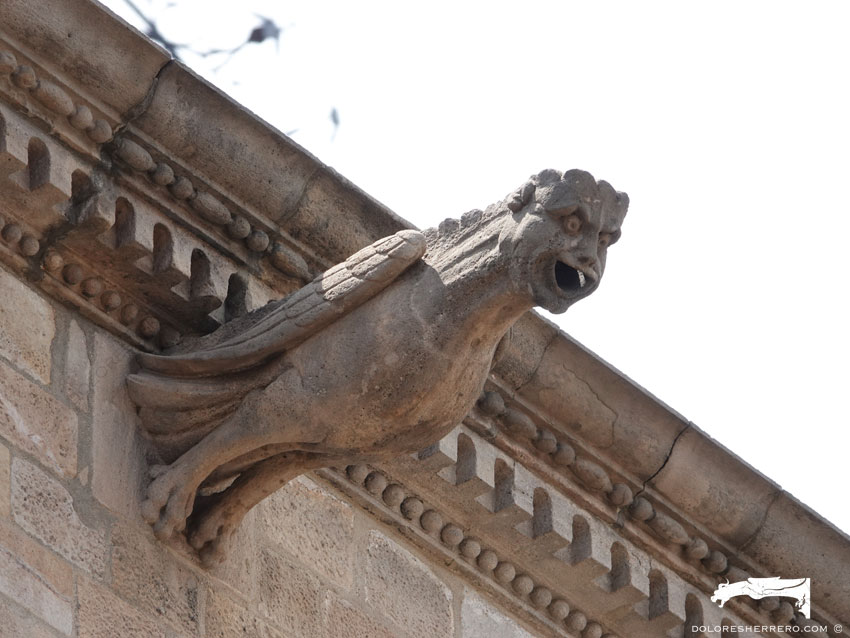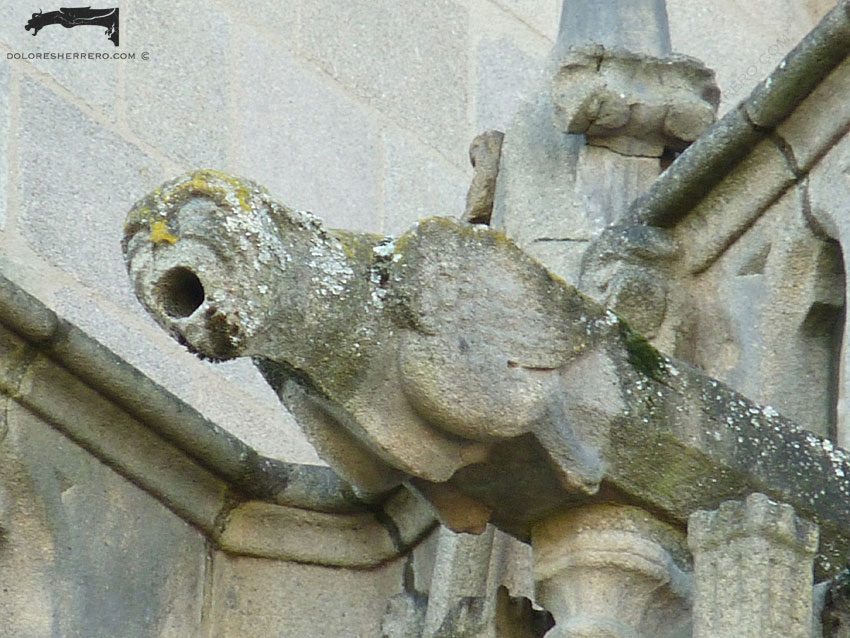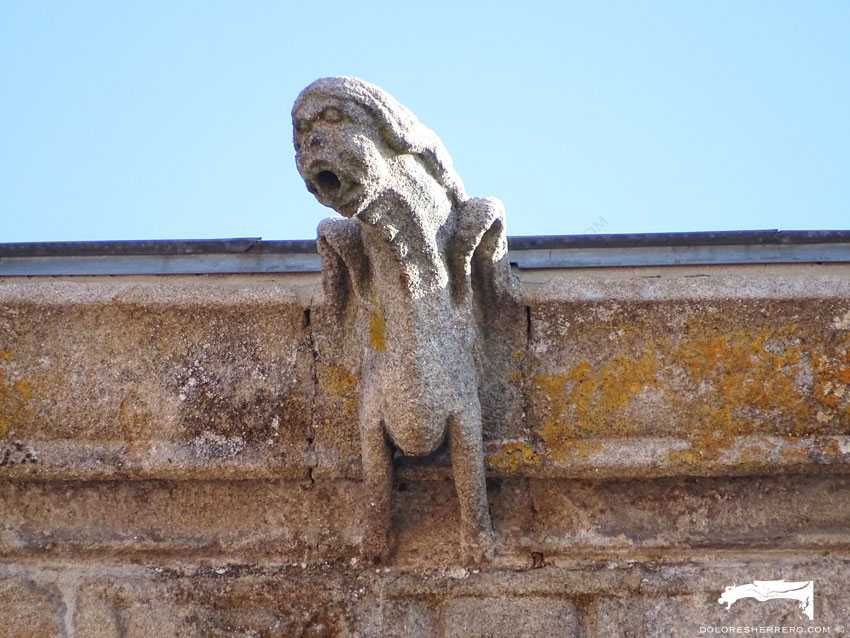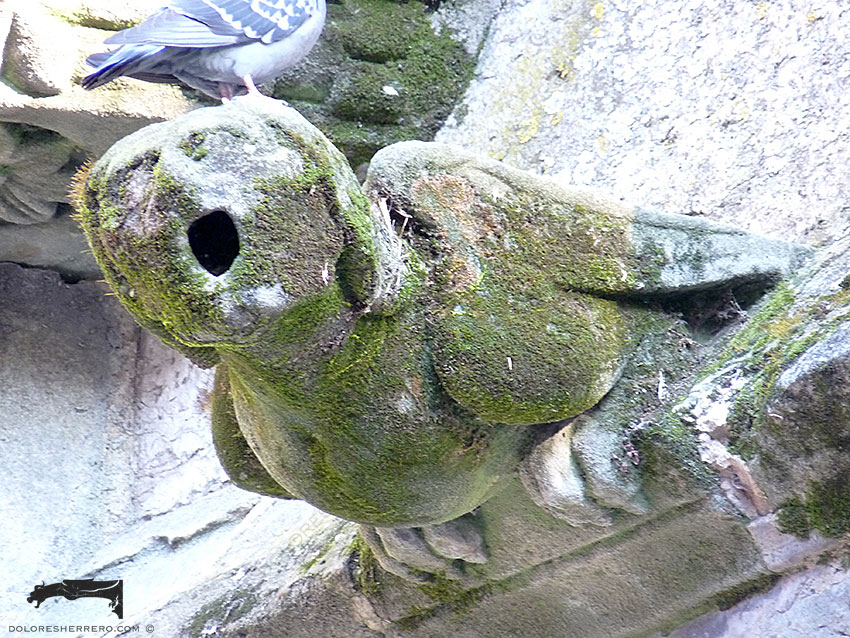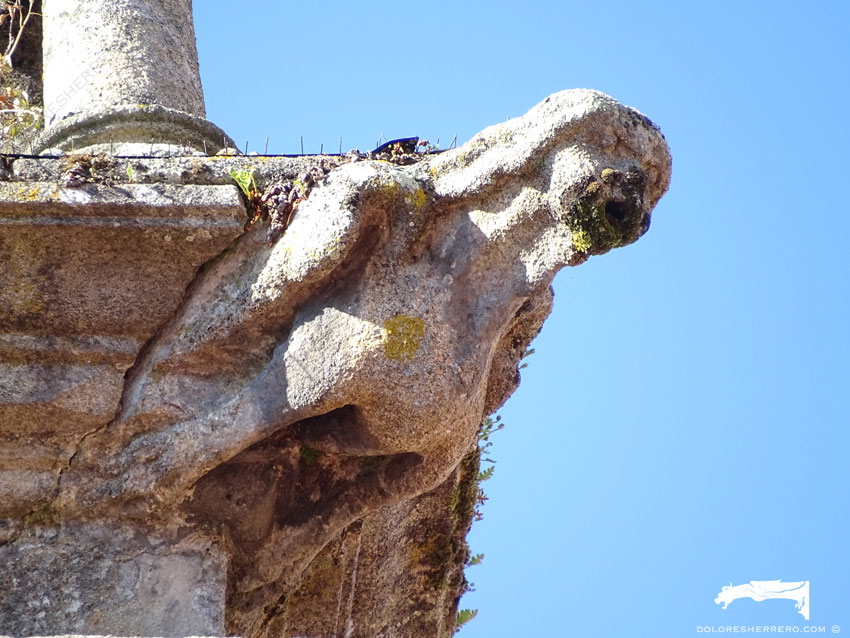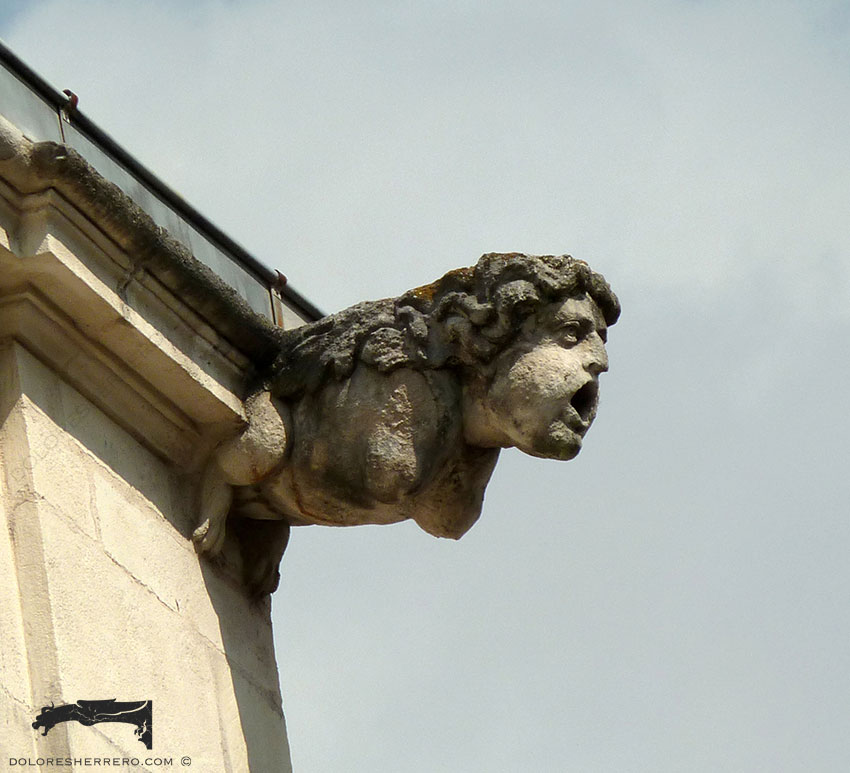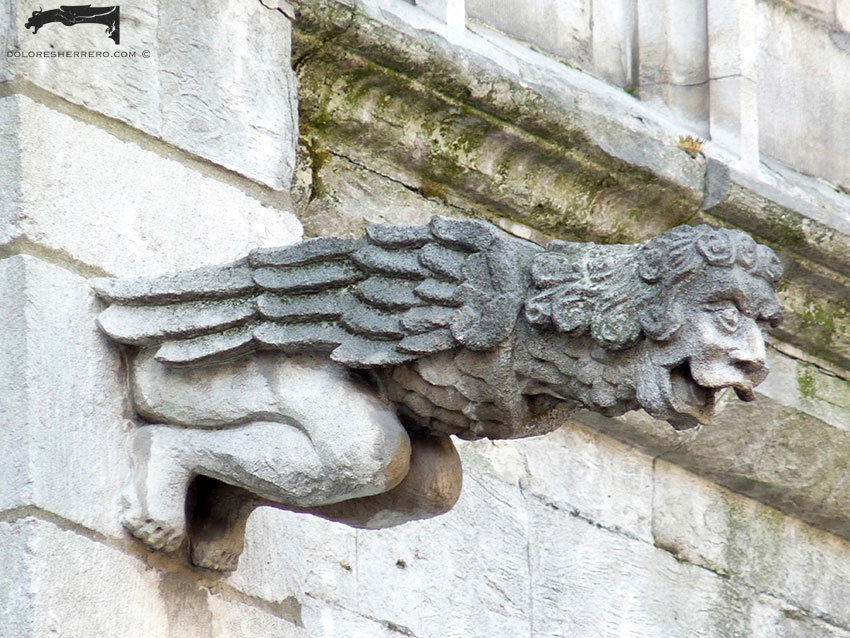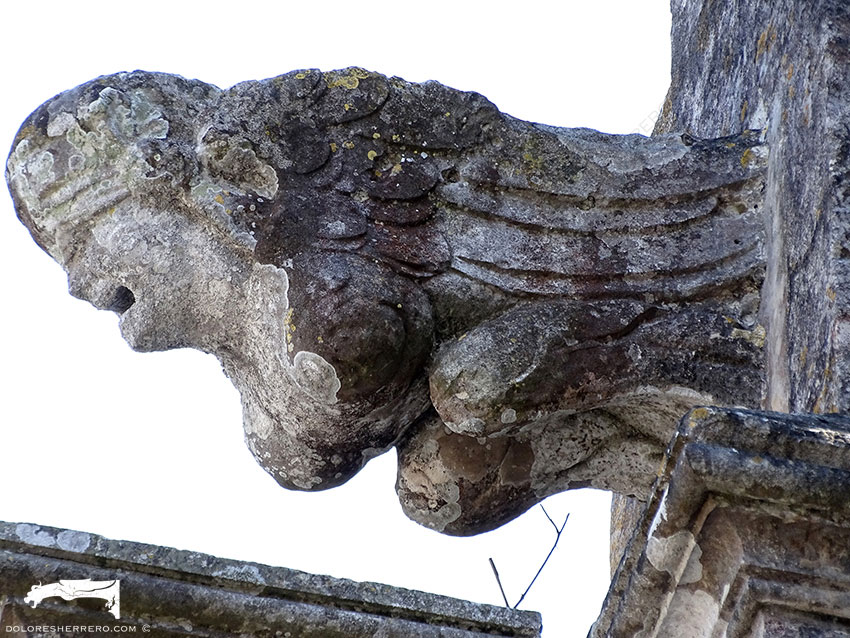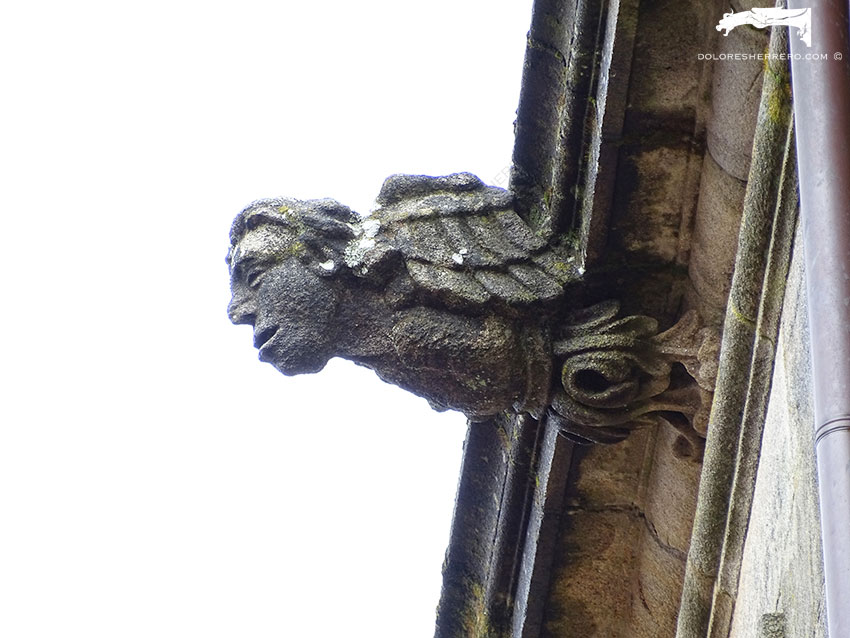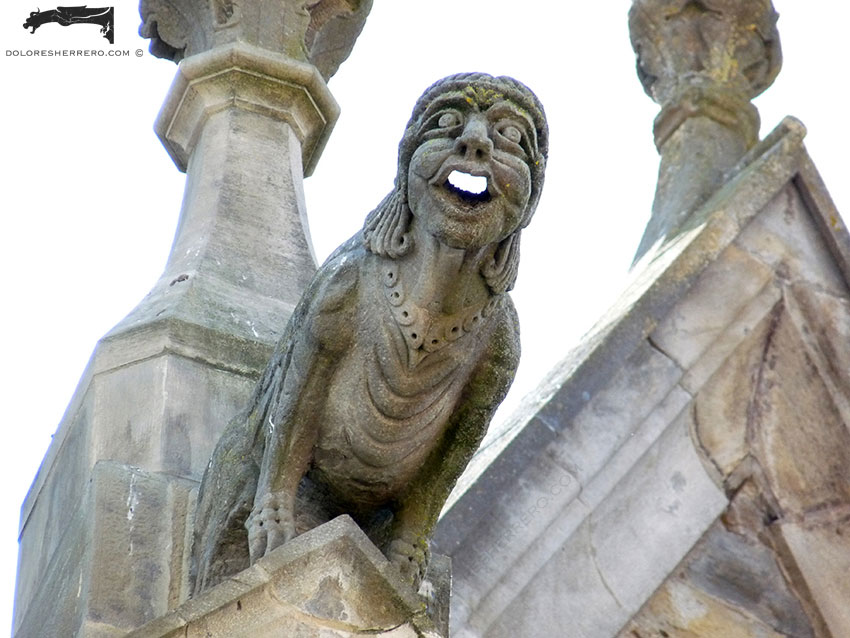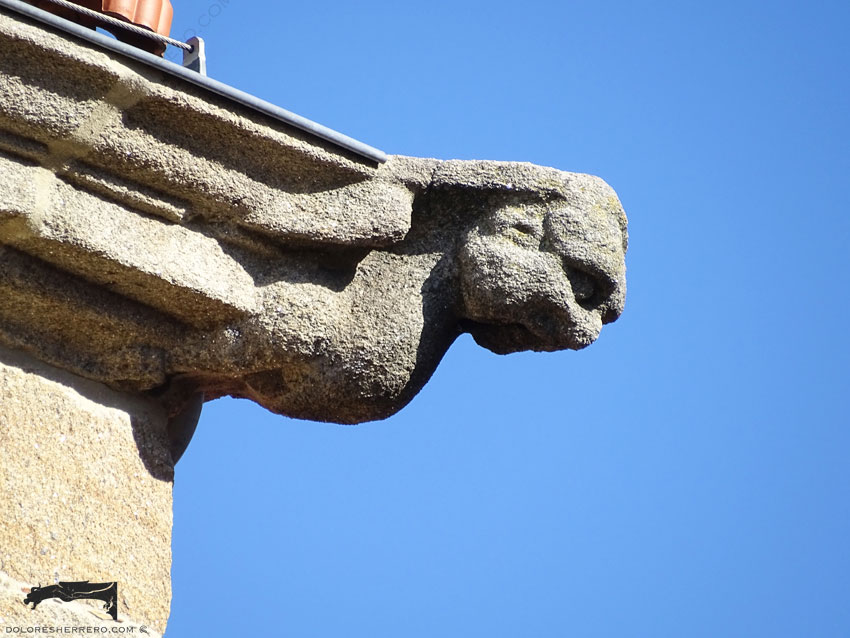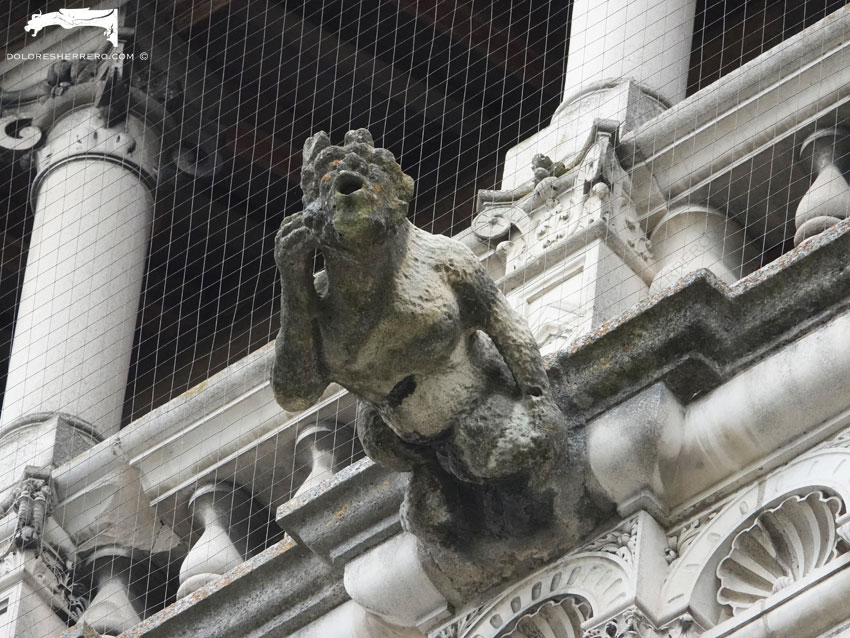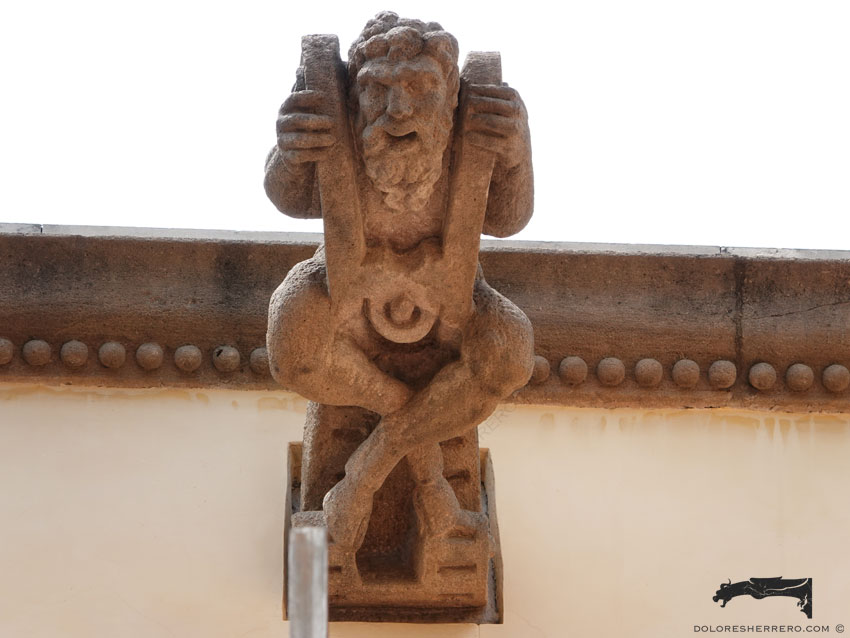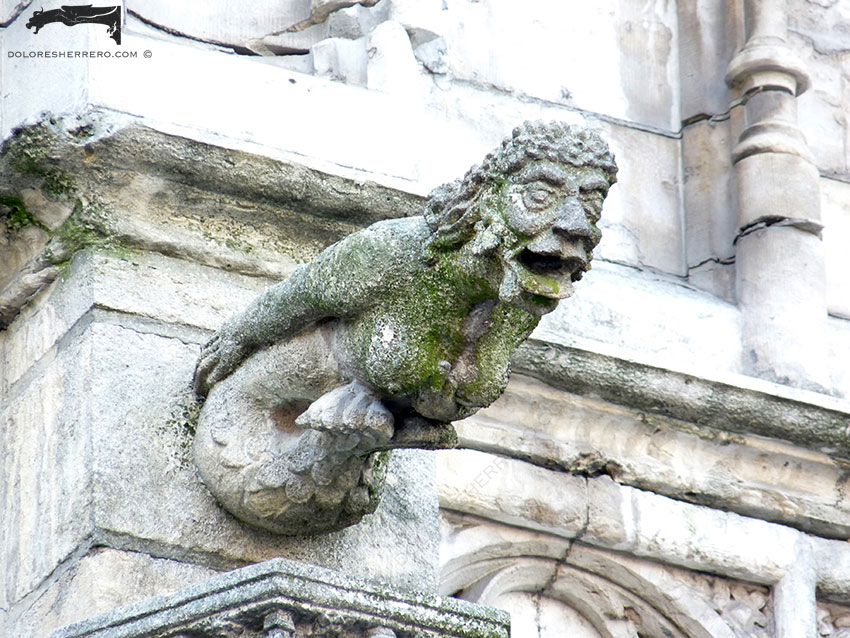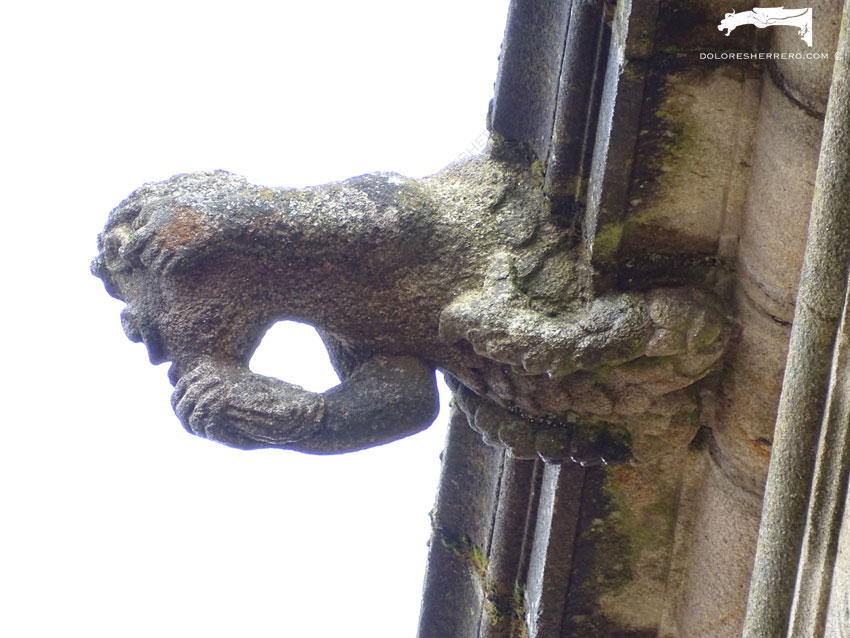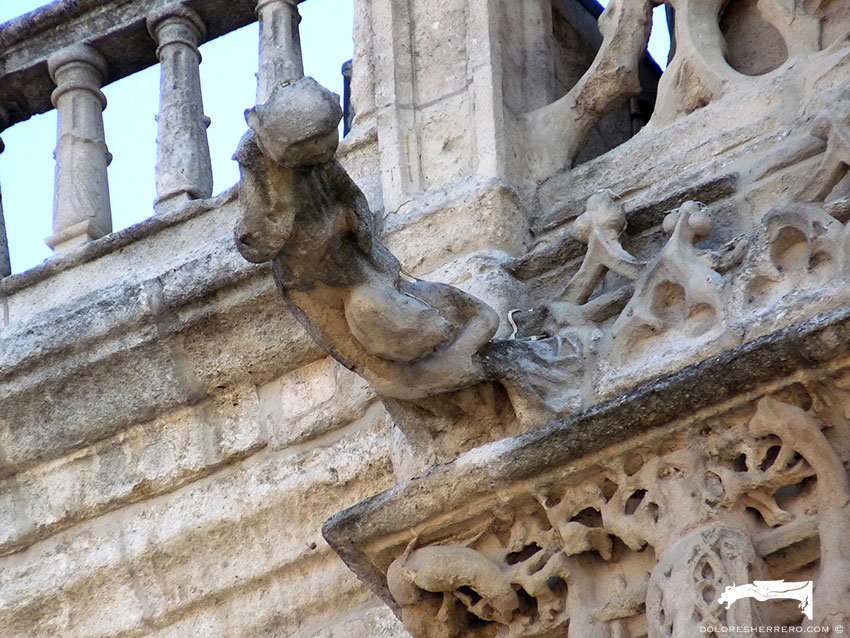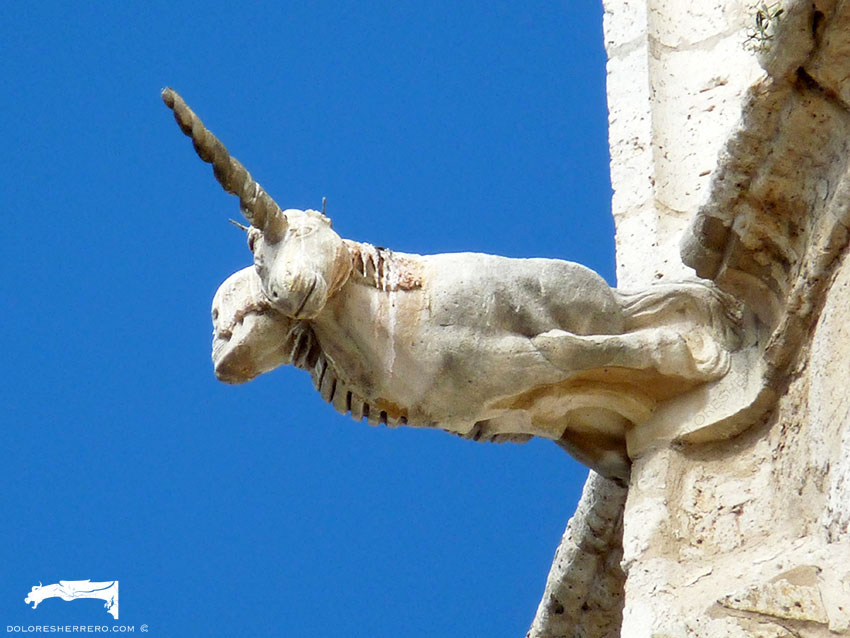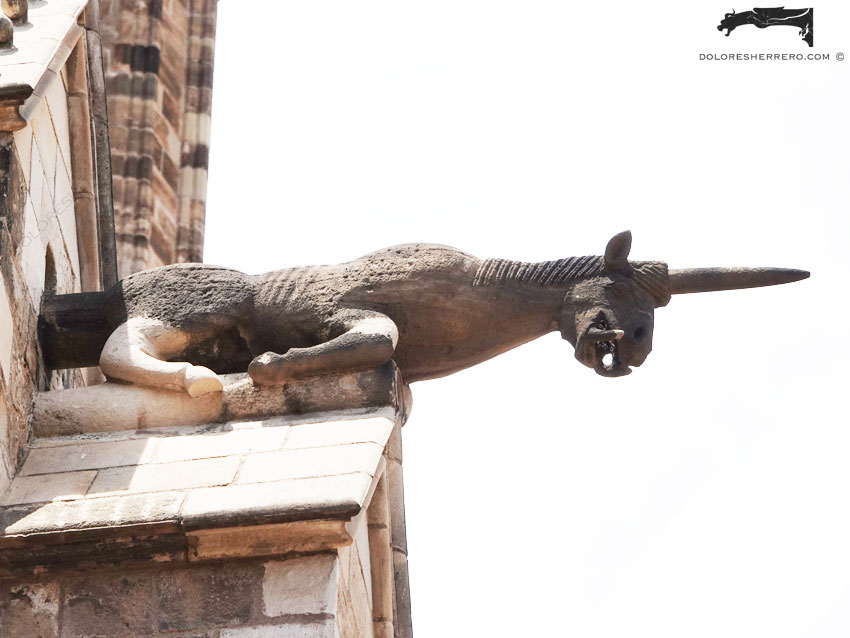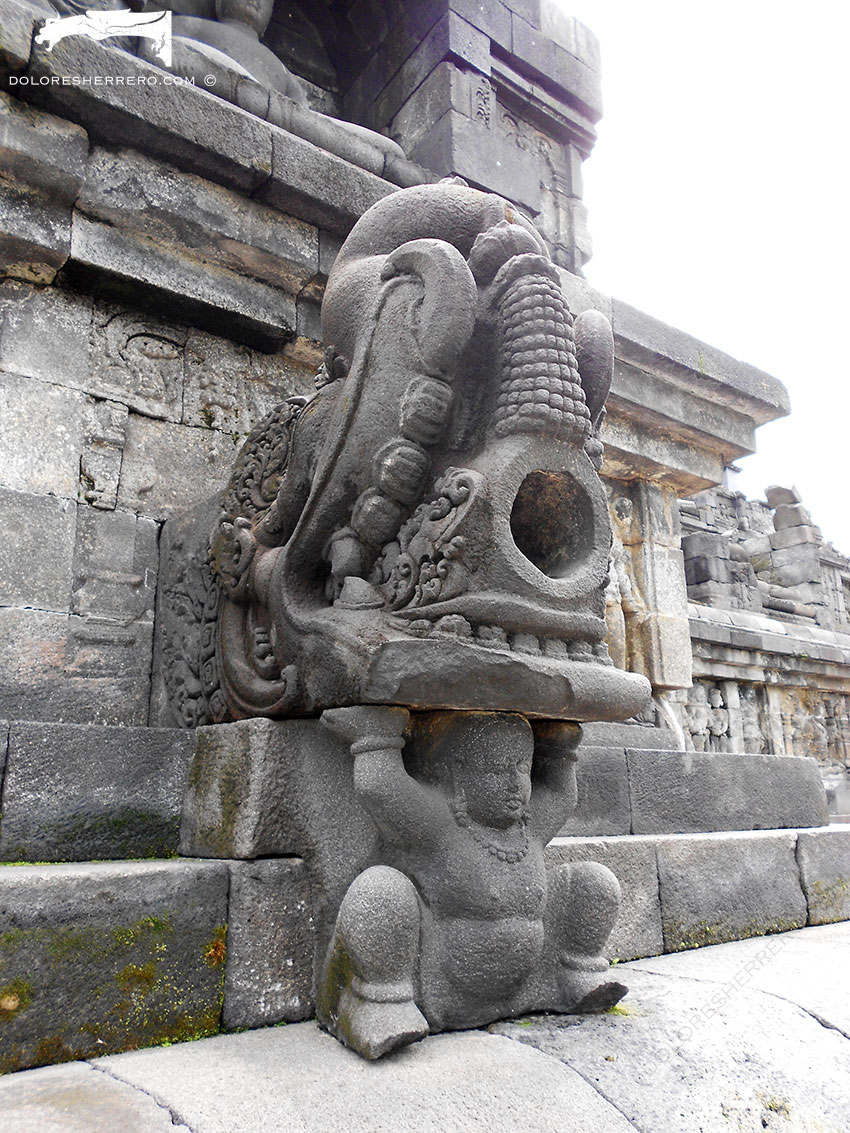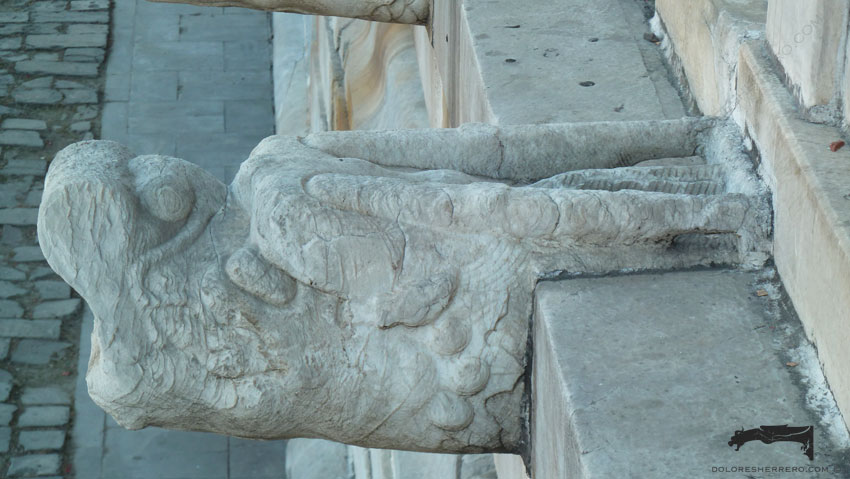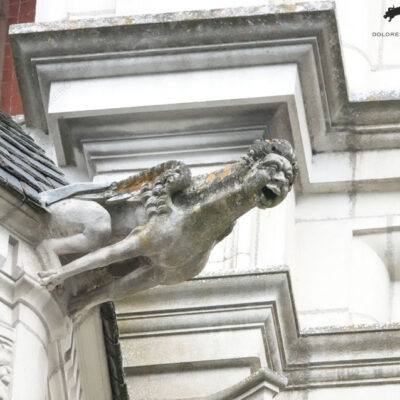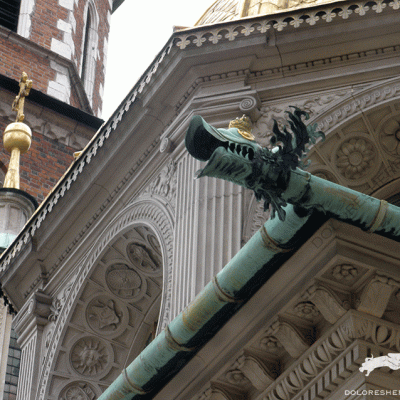In previous posts, we’ve seen gargoyles representing mythical or fabled animals. These astonishing, tantalising creatures have formed part of our traditions since ancient times. Each and every one of them is associated with a generally fantastical and beguiling legend and has a symbolic connotation. Regardless of the country or continent they come from, they are always captivating and astounding. They constitute a slice of art history.
So today, I’m going to talk a little about mythology and the meaning of gargoyles representing mythical creatures. But first, we’re going to look at some artistic and written sources to set the scene.
Since ancient times, monsters have formed part of the mythology of numerous cultures, bequeathing us vast numbers of monstrous creatures that populate our psyches. They may be pure fantasy, but they were created by people of flesh and blood. Myths originated in the oral tradition, often as a way to explain the origins of the world and of humans. In the classical period, myths were fundamental to understand the meaning of life and death.
As Ressot has said, “What one culture consider monstrous, another may not. Every society creates its own mythology and our purest monsters are found in myths”. Myths are created and spread by diverse cultures and peoples, which is why their symbolism is so important.
According to Fromm, the myths of all cultures are written in one language, symbolism.
In the fourth century BC, an image was formed of India as the site of prodigies and marvels, and Ctesias of Cnidus (fifth century BC) was one of the first to describe its mythological animals. His work speaks of the manticore, the griffon and other monstrous beings.
One of the most important sources for the study of mythical animals is Pliny’s Natural History (first century): his work mentions mythological beings such as tritons and sea nymphs, which according to Pliny had been seen by locals (IX, 5-9).
Another major author is Isidore of Seville (sixth to seventh centuries). In his Etymologiae, he describes mythological beings of antiquity, some of which are taken from the works of Homer, Virgil and Ovid, such as centaurs, the Minotaur, the Hydra, the Chimera and the hound of Hades. In Book XII, devoted to animals, he also speaks of dragons, basilisks and the amphisbaena.
Another source is the Collection of Curiosities by Solinus (third century). He also refers in his work to monsters and fabulous beings such as the manticore, the unicorn and the griffon.
The Lapidary by Alfonso X (El Escorial, ms. h.I.15), a book on astrology of great scientific importance in its day, claims that humans, animals, plants and minerals are all governed by the movement of the stars or the celestial bodies, as ordained by God. Mythological beings appear in the margins and some of the initials in the manuscript.
Books on travels comprise another fundamental source for the study of fantastical animals, including Homer’s Odyssey, with its magnificent descriptions of fabulous monsters from Greek mythology (e.g. cyclopes, centaurs and sirens), the Argonautica by Apollonius of Rhodes and Virgil’s Aeneid. The journeys of Ulysses, the Argonauts and Aeneas provide news of the world of monsters associated with myths. Neither should we forget the journeys recounted in the Thousand and One Nights, compiled around the ninth century, in which many fantastical and monstrous beings also appear.
Meanwhile, early travellers included Jean de Mandeville, Marco Polo, Pian de Carpine, Bernhard of Breydenbach, William of Rubruck, Odoric of Pordenone and Jordan of Severac, up until Christopher Columbus. According to Kappler, sixteenth and seventeenth century travellers blended their own observations with legend, because they held preconceived ideas drawn from earlier sources. These travellers found it difficult to distinguish clearly between myth and reality, since both appeared closely intertwined. There was no distinction between what was real and unreal. Until the fifteenth century, everything was real. Furthermore, not only was this distinction considered of no interest, but “marvels” exerted a strong attraction because they “do not belong to the normal order of things” and were therefore amazing. All the travellers’ stories teem with monsters and mythical animals. Some travellers claimed to have witnessed them first hand while others recounted what the legends said or what they had been told by the natives. Regardless, they formed an essential source for artistic representations. However, it should be noted that some of the depictions, which we would find fantastical, actually represented an artist’s attempt at a realistic portrayal based solely on travellers’ accounts or other sources. Such is the case of the unicorn, which might well have been inspired by the rhinoceros.
In 1529, commissioned by Leo X, Leo Africanus wrote his History and Description of Africa and of the Notable Things Therein Contained, in which he also describes monstrous beings: “And is born a dragon, which has the head and wings of bird, a serpent’s tail, the feet of a wolf and the speckled, many-coloured skin of a serpent”.
Another source is the zoological encyclopaedia Historia Animalium by Konrad Gessner (sixteenth century), in which he describes mythical animals from the classics (e.g. the cynocephali, manticore, unicorn, satyr and sphinx).
With regard to artistic sources, the Islamic world played an important role in the transmission of myth. Trade, the crusades and pilgrimages gave rise to relations that fostered the transmission of artistic forms and themes. The fabrics supplied by the Islamic world to the West comprised an important vehicle for this transmission, with their exotic motifs and fantastical ornamentation that included Asian monsters. Other sources were pottery and metalwork. A good example of such transmission is the siren bird depicted on Fatimid beams (tenth century).
Most mythological beings are anthropomorphic, and it is very common to find representations of fantastical beasts that are human-animal hybrids. The most prevalent type is the one with a human head and an animal body or vice versa. As we have seen, humans with an animal head can be traced back to ancient Egypt, with Anubis, the jackal-god, Amon, with a ram’s head, and Horus, with a hawk’s head. Meanwhile, the Greco-Roman world gave us the famous Minotaur.
Turning to the images used to adorn texts, the strong religious tradition of the Middle Ages gave way in the late fifteenth and early sixteenth centuries to illustrations that reflected a changing mentality embodied in Renaissance thought. Mythology is represented as mere decoration and has lost its former meaning. Anatomical, zoological and botanical illustrations start to appear. The fantastical beings that appear in sixteenth century engravings generally serve a decorative function, turning up in meanders or surrounds stripped of their original meaning and merely adding an exotic element to the ornamentation.
Boto Varela has said that in architectural ornament, representations of the more conventional zoomorphic monsters, such as griffons, harpies, sirens, centaurs and dragons, appear to have been considered “elements that conferred social and spiritual prestige”.
The meaning of gargoyle representations of these mythological creatures is determined by two fundamental factors: their symbolic functions and the devil as a predominant figure, especially in religious buildings.
As we saw elsewhere, gargoyles have three main symbolic functions: to intimidate and thus inspire fear, to serve as protective talismans and to adorn.
As with real animals, these mythological beasts symbolise both positive and negative aspects. However, in the case of gargoyles, it is their negative, malevolent meaning that interests us here, and therefore the second factor, which is the devil. The devil is associated with serpents and lustful sexuality, as are some mythological animals.
In gargoyles, the iconography of the devil is represented in a multitude of ways. Many of the mythical animals represented symbolise the devil, since they are associated with all that is evil and demonic, such as the dragon, the serpent and the griffon. One of the most common representations of the devil is the male goat, whose symbolism dates back to classical antiquity and the figures of Pan and Silenus.
Most of these mythological beasts had malignant connotations. Beings such as the siren, the griffon, the harpy and the dragon were frequently associated with Satan.
In Christian iconography, the serpent is associated with the idea of evil and the devil. When describing serpents in Book XII of his Etymologiae, Isidore includes the jaculus, a flying serpent, and other Arabian snakes called sirens that are also equipped with wings.
The first fantastical animal associated with the serpent is the dragon, which I spoke about in an earlier post on this fascinating creature. As we know, Greek mythology also has representations of dragons: the gorgons; the Echidna, a woman from the waist up and a snake from the waist down; the Typhon, a monster with a hundred heads; and the Hydra of Lerna, a many-headed dragon.
One of the symbolic meanings of mythological monsters is sexuality, which since antiquity has been associated with monstrosity, as illustrated by the example of the Sphinx (a symbol of lust) as well as a number of other mythological figures such as satyrs, centaurs and sirens. According to Brunetto Latini (thirteenth century), animals associated with water, such as sirens, are “harlots” and evil beings “who inhabit water because lust springs from moisture”.
Representations of mythological animals, usually human-animal hybrids, serve the same three symbolic functions as gargoyles: an intimidatory function in churches and cathedrals, symbolising sinners who have been transformed into animals because they sinned; a protective function as guardians of buildings, as figures constituting protective talismans; and an ornamental function, as figures decorating the water spouts.
These mythical animals thus comprise a series of creatures that constitute an ideal subject for gargoyles, not only because of their association with the devil, serpents and sexuality, but also because these hybrid creatures with fascinating forms are extremely decorative.
Dragon
- Salamanca Cathedral (Spain)
- Narbonne Cathedral (France)
- Batalha Monastery (Portugal)
- Petit Palais Museum in Avignon (France)
Griffon
- Bayonne Cathedral (France)
- Blois Cathedral (France)
- Oviedo Cathedral (Spain)
- Château Royal in Blois (France)
- Church of Nuestra Señora del Juncal in Irún (Spain)
- Château Royal in Blois (France)
- Château Royal in Blois (France)
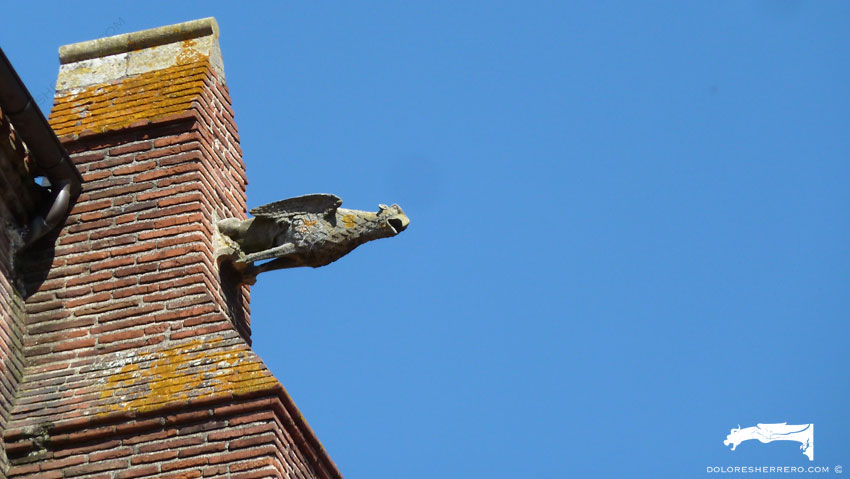
Musée des Augustins in Toulouse (France)
Harpy
- Archive of the Crown of Aragon in Barcelona (Spain)
- Brussels Cathedral (Belgium)
- Limoges Cathedral (France)
- Orense Cathedral (Spain)
- Cahors Cathedral (France)
- Orense Cathedral (Spain)
- La Rochelle (France)
- Brussels City Hall (Belgium)
- Batalha Monastery (Portugal)
- San Martín Pinario Monastery (Santiago de Compostela, Spain)
- Orense Cathedral (Spain)
Satyr
- Château Royal in Blois (France)
- Archive of the Crown of Aragon in Barcelona (Spain)

Blois Cathedral (France)
Siren
- Brussels City Hall (Belgium)
- San Martín Pinario Monastery (Santiago de Compostela, Spain)
- Burgos Cathedral (Spain)
- Grotesque. San Martín Pinario Monastery (Santiago de Compostela, Spain)
Unicorn
- Palencia Cathedral (Spain)
- Barcelona Cathedral (Spain)
Makara
- Borobudur Temple (Java, Indonesia)
- Forbidden City (Beijing, China)
Bibliography consulted
BALTRUŠAITIS, J., La Edad Media fantástica. Antigüedades y exotismos en el arte gótico, Madrid, Ediciones Cátedra, S. A., 1987.
BOTO VARELA, G., Ornamento sin delito. Los seres imaginarios del Claustro de Silos y sus ecos en la escultura románica peninsular, Santo Domingo de Silos (Burgos), Abadía de Silos. Studia Silensia. Series Maior III, 2001.
CTÉSIAS, Histoires de l´Orient, traduit et commenté par J. Auberger, Paris, Société d´édition Les Belles Lettres, 1991.
DOMÍNGUEZ RODRÍGUEZ, A., Astrología y Arte en el Lapidario de Alfonso X el Sabio, Murcia, Edición de la Real Academia Alfonso X el Sabio, 2007.
GARCÍA ÁLVAREZ, C., El simbolismo del grutesco renacentista, León, Universidad de León. Secretariado de Publicaciones, 2001.
GARCÍA VEGA, B., El Grabado del Libro Español. Siglos XV-XVI-XVII. (Aportación a su estudio con los fondos de las bibliotecas de Valladolid), Tomos I y II, Valladolid, Institución Cultural Simancas. Diputación Provincial de Valladolid, 1984.
GOMBRICH, E. H., El sentido del orden. Estudio sobre la psicología de las artes decorativas, Madrid, Editorial Debate, S. A., 1999.
KAPPLER, C., Monstruos, demonios y maravillas a fines de la Edad Media, Madrid, Ediciones Akal, S. A., 1986.
KLEIN, F., Mitos, Leyendas y Fábulas, Alcalá la Real (Jaén), Alcalá Grupo Editorial y Distribuidor de Libros, 2007.
LINK, L., El Diablo. Una máscara sin rostro, Madrid, Editorial Síntesis, S. A., 2002.
MALAXECHEVERRÍA, I., Bestiario medieval, Madrid, Ediciones Siruela, S. A., 2008.
PLINIO EL VIEJO, Historia Natural. Libros VII-XI, coord.: A. M. Moure Casas, Madrid, Editorial Gredos, S. A., 2003.
RESSOT, J. P., Apología de lo monstruoso. Una lectura de la obra de Ramón J. Sender, Huesca, Instituto de Estudios Altoaragonses (Diputación de Huesca), 2003.
SAN ISIDORO DE SEVILLA, Etimologías, II (Libros XI-XX), Madrid, Biblioteca de Autores Cristianos S. A., 1982.
SOLINO, Colección de hechos memorables o El Erudito, Madrid, Editorial Gredos, S. A., 2001.
WITTKOWER, R., La alegoría y la migración de los símbolos, Madrid, Ediciones Siruela, S. A., 2006.

Doctor of Art History and researcher specializing in the study of gargoyles.
I am Dolores Herrero Ferrio, and my thesis, “An Approach to the Study of Gargoyles of Gothic Cathedrals in Castilla and León”, is dedicated to the study of these fascinating figures.
If you like gargoyles and art history, you will also enjoy my book, “The Gargoyle and Its Iconography,” a book I have written with great care for those interested in the world of gargoyles.
I have created my own Encyclopedia of Gargoyles, a Gargopedia to share with you, where you will discover all the secrets and wonders of these enigmatic sculptures.
I hope you enjoy this Gargopedia as much as I have enjoyed creating it, and remember that each gargoyle has a story to tell, and here you will discover them all.
